In the minds of most people, hell is a giant funnel that goes into the depths of the Earth. It consists of nine circles, and the stronger a person’s sin, the deeper the circle he is in and goes through severe punishments. When it comes to heaven, many of us imagine a wonderful place somewhere in heaven. Such images of hell and heaven were invented by the Italian poetDante Alighieriin the poem “The Divine Comedy”. The famous thinker lived in the 12th–13th centuries, and many details about his life are known to us only from the writings of people who lived long after him. And we still don’t know exactly what he looked like. Recently, scientists were able to recreate his appearance based on the reconstruction of the skull – to date, this portrait of Dante Alighieri can be called the most realistic.
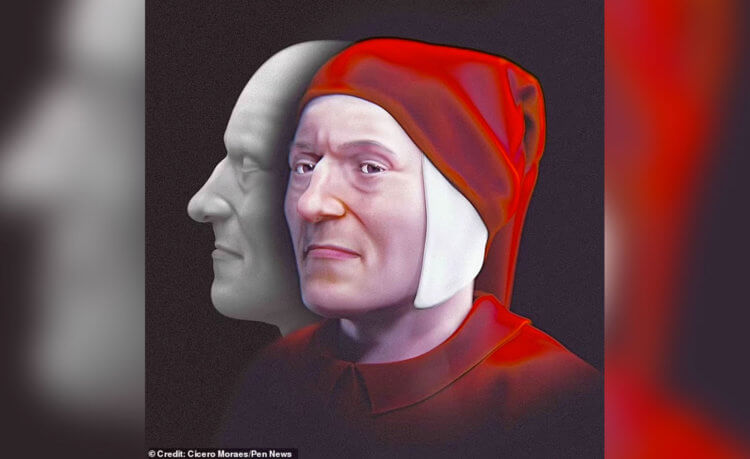
The results of a new scientific study show that Dante Alighieri looked like this
What Dante Alighieri was
Dante Alighieri has become an icon of Western literature thanks to his many world-famous works. His most famous work is The Divine Comedy, which describes a journey to hell, heaven and purgatory.
Despite the fact that his works have survived to this day and are available to everyone, the poet’s appearance remains a mystery. You can find many of his portraits on the Internet, but they were painted many years after his death back in 1321.
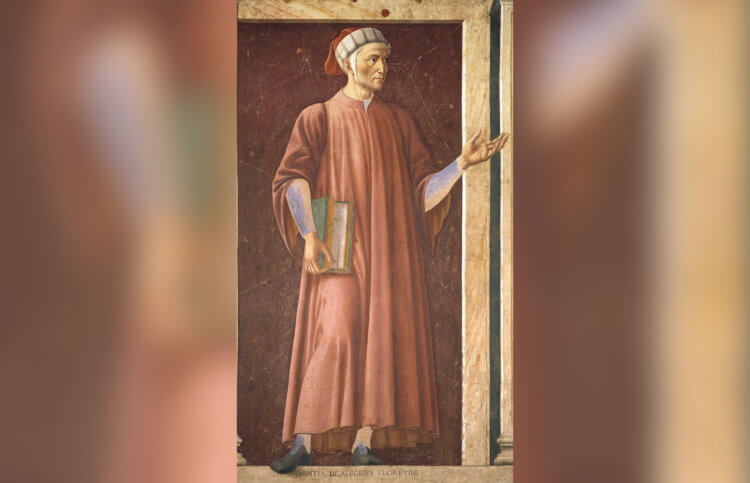
Dante in the fresco of Villa Carduccio Andrea del Castagno
According to the author of the new study, Cicero Moraes, details about the great poet's appearance are known from the biography of Dante, written by the poet Giovanni Boccaccio. He described him as a man of average height with a slight stoop, a long face, an aquiline nose and large eyes. Boccaccio collected these details from the words of people close to the poet. But he never saw him personally.
Read also:Alexander Pushkin could have been saved from death – true or not?
Portrait of Dante Alighieri
Consequently, all existing portraits of Dante Alighieri may be far from the truth. To create a more realistic image of the poet, scientists used a model of the skull created based on an analysis of his bones – this work was carried out by scientists back in 1921. The authors of the new study also took into account data from 2007, which also spoke about the shape and other features of his skull.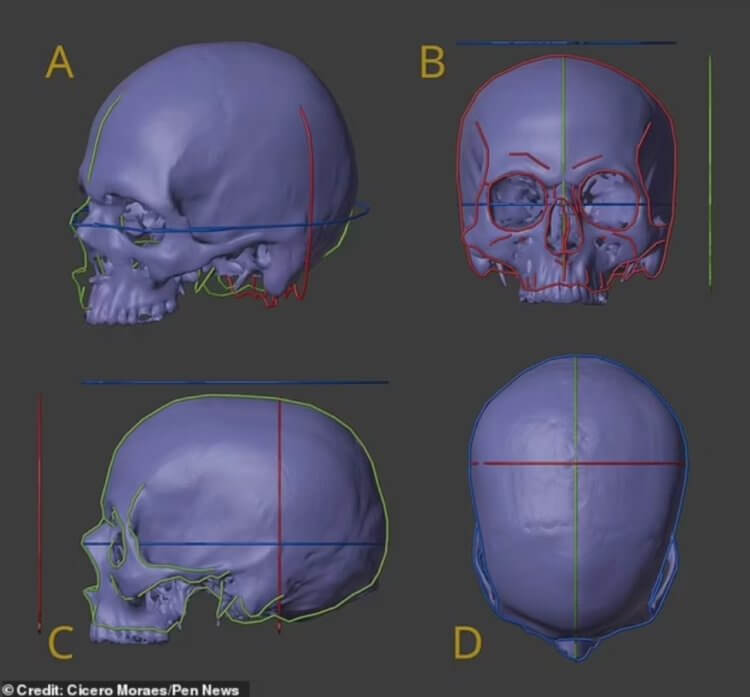
Model of Dante Alighieri's skull
Having created a model of Dante Alighieri’s skull, scientists used a computer to “stretch” virtual skin over it. As a result, they ended up with the image of a man with a slightly exhausted face. This can be explained by the fact that the Italian poet’s fate was not easy. The fact is that in 1302 he was expelled from his native Florence. The man died in the Italian city of Ravenna in 1321. It is believed that the poet was exiled after accusations of corruption and patronage.
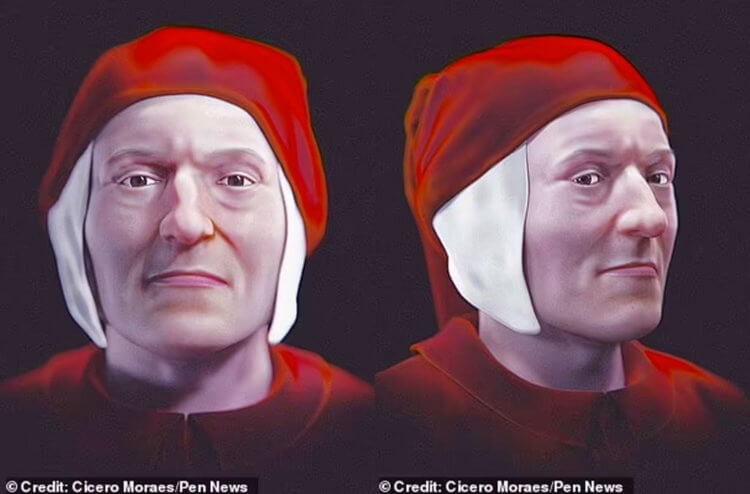
Modern portrait of Dante Alighieri
Scientists noted that Dante Alighieri's head size was slightly larger than that of all other people. One would think that this was due to his developed mind. But head size is definitely not a measure of mental ability – this has been proven by science. Ancient people had a larger brain than modern people, but they were not smarter than us.
You may be interested:Artificial intelligence has revealed the secret of one of Raphael’s paintings
< h2>How the modern Italian language appeared
But no one will argue with the fact that Dante Alighieri was a genius. He is considered the father of the Italian language, and this is not just a loud statement. In his Divine Comedy he used the Tuscan dialect, which at that time was one of the most prestigious and literary in Italy. This helped establish the Tuscan dialect as the basic basis for the future Italian literary language.
Also, Dante Alighieri made a brilliant move by using Italian rather than Latin for his work. This made his poem more accessible and understandable to the widest possible audience, and not just educated priests and scientists. His work had a huge impact on the development of the Italian language. He was able to introduce many new words and phrases, and also standardized the rules of grammar and spelling.
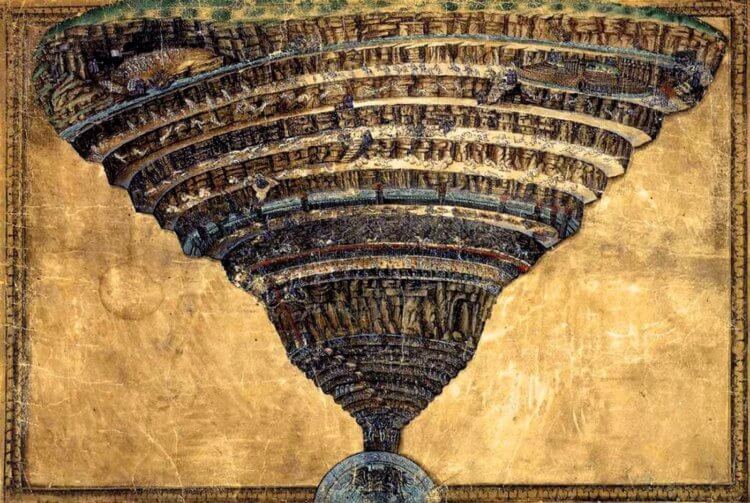
This is what hell looks like in Dante Alighieri
If you liked this material, be sure to read our article “What Caesar and other historical figures would look like in the modern world.” In it we have collected images with recreated faces of such historical figures as Gaius Julius Caesar, Cleopatra, Napoleon Bonaparte, Elizabeth Bathory, Aristotle and so on.
To stay up to date with all the interesting developments in the field of science, subscribe to our channels in Zen and Telegram. It's free!
Sometimes scientists dig even deeper and recreate the faces of ancient people. For example, in 2023, my colleague Andrei Zhukov talked about how scientists reconstructed the appearance of a dragon man, the closest relative of modern humans.